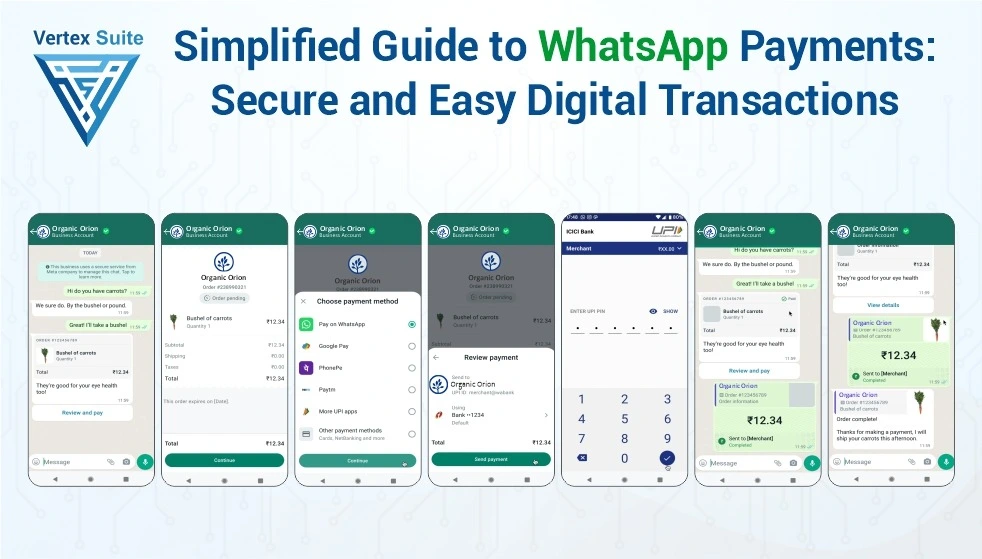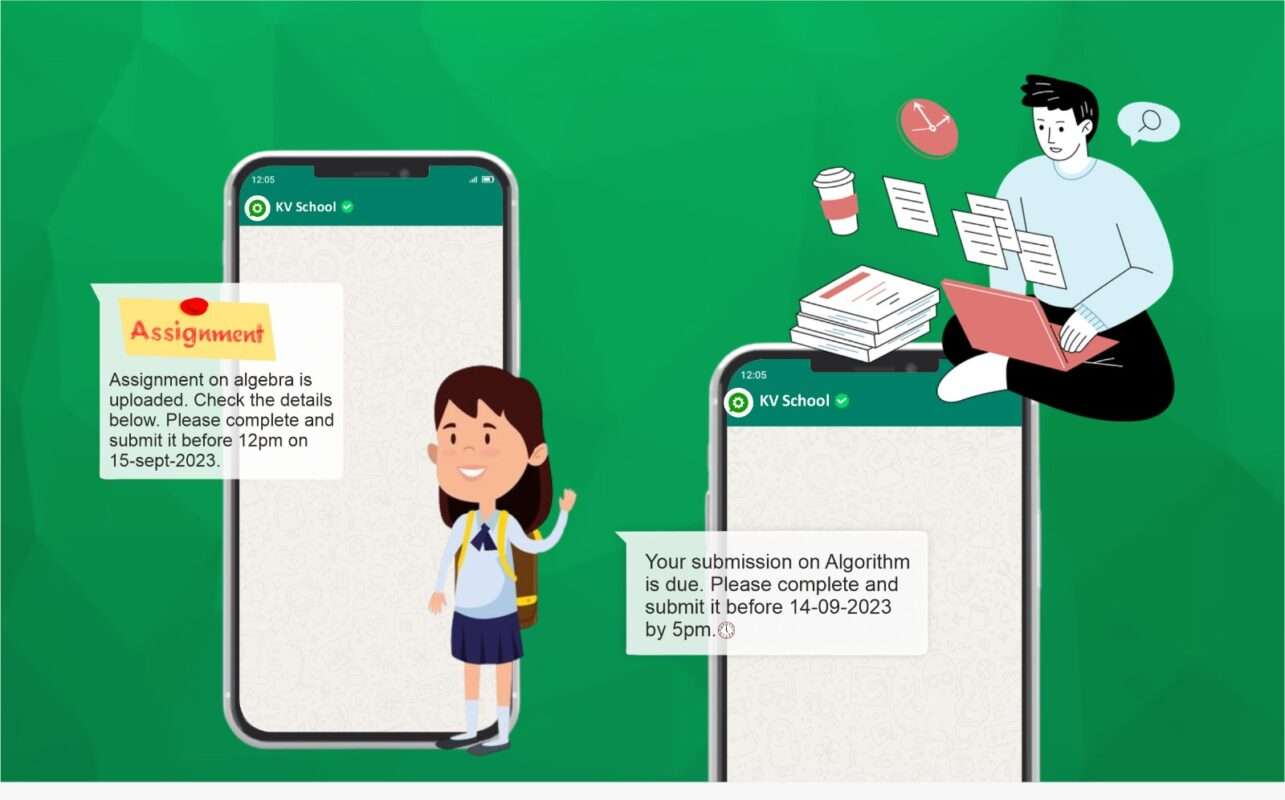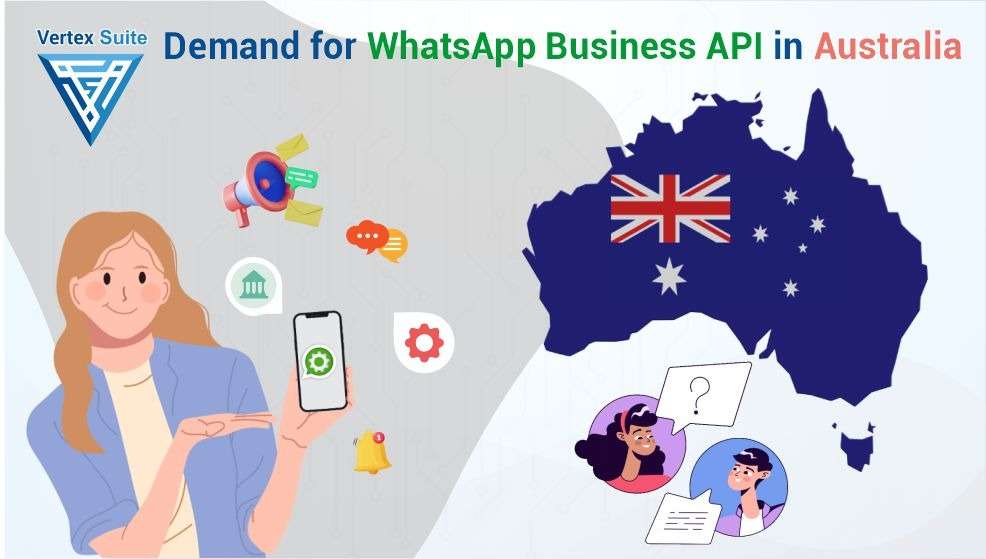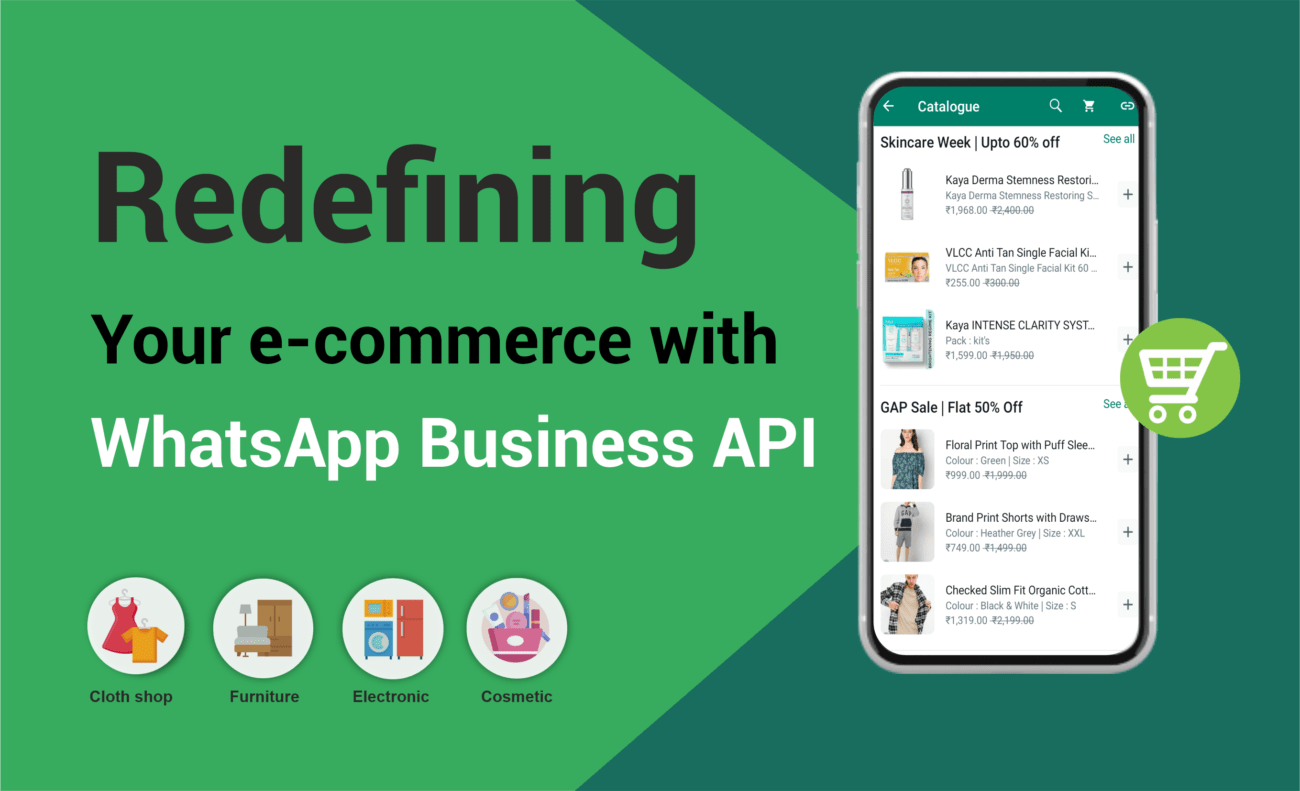Introduction to WhatsApp Payments:
WhatsApp Payments has changed the way users do business in its messaging app. This feature eliminates the need for users to use third-party payment platforms, allowing them to send and receive money directly through WhatsApp. Users can easily link their bank accounts through WhatsApp Payments, making it easy to split bills, pay friends or make purchases.
The process is simple: users simply select the payment option in chat, enter the amount, validate the transaction and send. Security is a priority with end-to-end encryption and multi-factor authentication, ensuring the safety of sensitive money. WhatsApp Payments has not only made payments easier but also created greater connectivity and capability with users, making the messaging app a great platform for communication and sales.
Comparison with Other Payment Platforms:
1. Unified Payments Interface (UPI) for making payments through WhatsApp:
- Reconciliation: Enables both peer-to-peer transactions and linking bank accounts.
- Difference: UPI typically requires a separate banking app, but WhatsApp Payments is integrated into the messaging app.
- Unique Features: While UPI provides many services like bill payments and merchant transactions, WhatsApp simplifies payments.
2. Google Pay to make payments through WhatsApp:
- Reconciliation: Helps in linking both bank accounts and facilitates sending money from one person to another.
- Difference: Google Pay is a standalone payments app, while WhatsApp Pay is integrated into WhatsApp.
- Distinctive features: WhatsApp leverages chat for payment transactions, while Google Pay offers additional benefits like loyalty rewards.
3. Pay with WhatsApp and Apple Pay:
- Reconciliation: Both enable digital money transfers, with security paramount.
Difference: App Pay works only on Apple devices, but WhatsApp Pay works on Android and iOS.
- Distinctive features: Apple Pay supports in-store, online and in-app purchases, but WhatsApp Payments focuses on chat.
4. Razor Using WhatsApp Post:
- Reconciliation: Both platforms support digital transactions and security.
Difference: Razer is geared for gaming and e-commerce, integrated with WhatsApp Payments messaging.
- Distinctive features: WhatsApp Payments leverages its large user base for seamless money transfers, while Razer Gaming offers virtual currency for purchases.
Each platform caters to different user preferences and needs. WhatsApp Payments prioritizes simplicity and chat, but other payment systems like UPI, Google Pay, Apple Pay and Razer offer specific features for specific uses like loyalty rewards and gaming purchases.
Benefits of WhatsApp Payments:
1. WhatsApp Payments offers several benefits in peer-to-peer (P2P) transactions:
I. Convenience:
Through WhatsApp Payments, users can send and receive their daily expenses directly in the messaging app. There is no need to switch between multiple platforms and apps, making transactions easier and safer.
II. Security:
WhatsApp prioritizes security, using end-to-end encryption and multi-factor authentication to ensure the safety of sensitive money during transactions. Users can feel safe knowing that their money and personal information is safe.
III. Continuous integration with messaging:
A big advantage of WhatsApp Payments is their integration with messaging. Making it easier to split bills, pay friends, or make purchases while discussing plans or coordinating events, users can initiate transactions within chat conversations. This seamless integration improves the user experience, making transactions feel more natural and easier.
Overall, WhatsApp simplifies P2P transactions by seamlessly integrating with payments, security, and messaging, making it an attractive option for users looking for a hassle-free way to send and receive money.
2. Security and Privacy:
Security and privacy are a top priority at WhatsApp Payments. Transactions are secured with end-to-end encryption, so payment details can only be seen by the sender and recipient. Multi-factor authentication increases security, as it requires users to confirm their identity before making a transaction. Furthermore, stringent data security protocols prevent unauthorized interference or misuse. WhatsApp Payments takes these measures to assure users that their transactions are secure and that their privacy is protected at all times.
3. Integration with Business Accounts:
There are many ways that you can take advantage of WhatsApp Payments to streamline transactions and increase customer engagement. First, they can add WhatsApp Payments to their existing business accounts, so customers can make payments directly from the messaging app. Businesses can use this easy payment option to streamline the checkout process, reduce friction, and increase conversion rates.
Businesses can also increase customer engagement by providing a personalized payment experience using WhatsApp Payments. For example, they can send payment links or invoices directly to customers through WhatsApp, making transactions easier. Making payments is easy and the customer finds efficient.
Businesses can also track and control transactions using WhatsApp Payments. They can view transaction history, monitor payment progress, and create reports, allowing them to gain valuable insight into customer behavior and preferences. This data can be used to drive business growth, improve customer service, and improve marketing efforts.
Overall, using WhatsApp Payments businesses can accept payments, settle transactions, and connect with customers, ultimately improving customer satisfaction and loyalty.
4. User Experience:
WhatsApp Payments provides a seamless user experience while prioritizing customer satisfaction. The integration of payment features directly into the familiar messaging app makes it easier for users. The easy process of initiating a transaction, combined with simple design components, makes it easy for any user regardless of their technical ability. The secure and reliable nature of WhatsApp Payments also reassures users and increases trust in the platform. Overall, WhatsApp Comments offers a user-centric experience that prioritizes convenience, accessibility, and satisfaction.
5. Regulatory Landscape:
There are differences in the regulations, government regulations and consumer protection laws applicable to digital payments. Many countries have government bodies in place to ensure fair and secure digital payments. This may include licensing conditions for payment service providers, data security and privacy rules, and measures to prevent fraud and money laundering.
The government can also make laws to promote innovation and financial inclusion in the digital payments sector. For example, some sectors adopted digital payment technologies to reduce reliance on cash and improve access to financial services for the disadvantaged.
Consumer protection laws also play an important role in the regulatory regime, which aims to protect the rights and interests of users. Issues such as transparent pricing, dispute resolution systems, liability limits for unauthorized transactions and protection from fraud and scams may be included in these laws.
Overall, the regulatory landscape of digital payments remains complex and changing, with rules being developed to stay balanced with technological innovations and changing market dynamics. Businesses operating in the digital payments sector need to be aware of regulatory requirements and compliance standards to ensure legal compliance and maintain customer trust.
Future Trends and Innovations:
The future of the digital payments industry will be driven by technological innovations, changing consumer behavior and growing market opportunities. An important trend is the continued growth of mobile payments, with smartphones becoming an important device while making money payments. This trend is expected to accelerate as contactless and secure mobile wallet technologies rise.
Additionally, innovations in biometric authentication such as facial recognition and fingerprints have the potential to enhance security and ease the authentication process for digital payments. These advancements will strengthen trust in digital payment platforms and improve user experience.
Also, the adoption of blockchain technology and cryptocurrency is expected to give a new shape to the digital payments sector. This will provide a secure and decentralized alternative to traditional payment systems. As regulatory frameworks evolve and cryptocurrencies gain mainstream acceptance, they could open up new markets and spur innovation in international payments and remittances.
Additionally, the demand for seamless and frictionless payment experiences will increase due to the increasing preference on digital services and online shopping. Businesses that prioritize omnichannel payment solutions and personalized customer experience are likely to succeed in this emerging landscape.
Overall, there is a lot of potential for future innovation and growth in the digital payments industry, driven by changes in technology, changing consumer behavior and growing market opportunities. Businesses that embrace these trends and changing dynamics will be well-positioned to take advantage of the evolving digital economy.
Case Studies and Success Stories:
There's a family in India that transcends traditional digital standards and uses WhatsApp to send money to its rural workers securely and quickly. Also, in Brazil a group of friends split shared expenses for meals and outings, making things easier and reducing hatred. Additionally, an Indonesian e-commerce has added plastic panels to its platform, increasing online checkout and sales.
Tips and Best Practices:
To use Bolts right, start by securely linking your bank account to the app. Always list the recipient's details and use a strong portfolio such as a PIN or Bio Business, so that the money is safe before it is dispatched. Resolve any blogger or debate instantly with visual location on Lane-Den's history and customer support. Finally, maintain the highest quality and security updates to keep your financial information safe.





